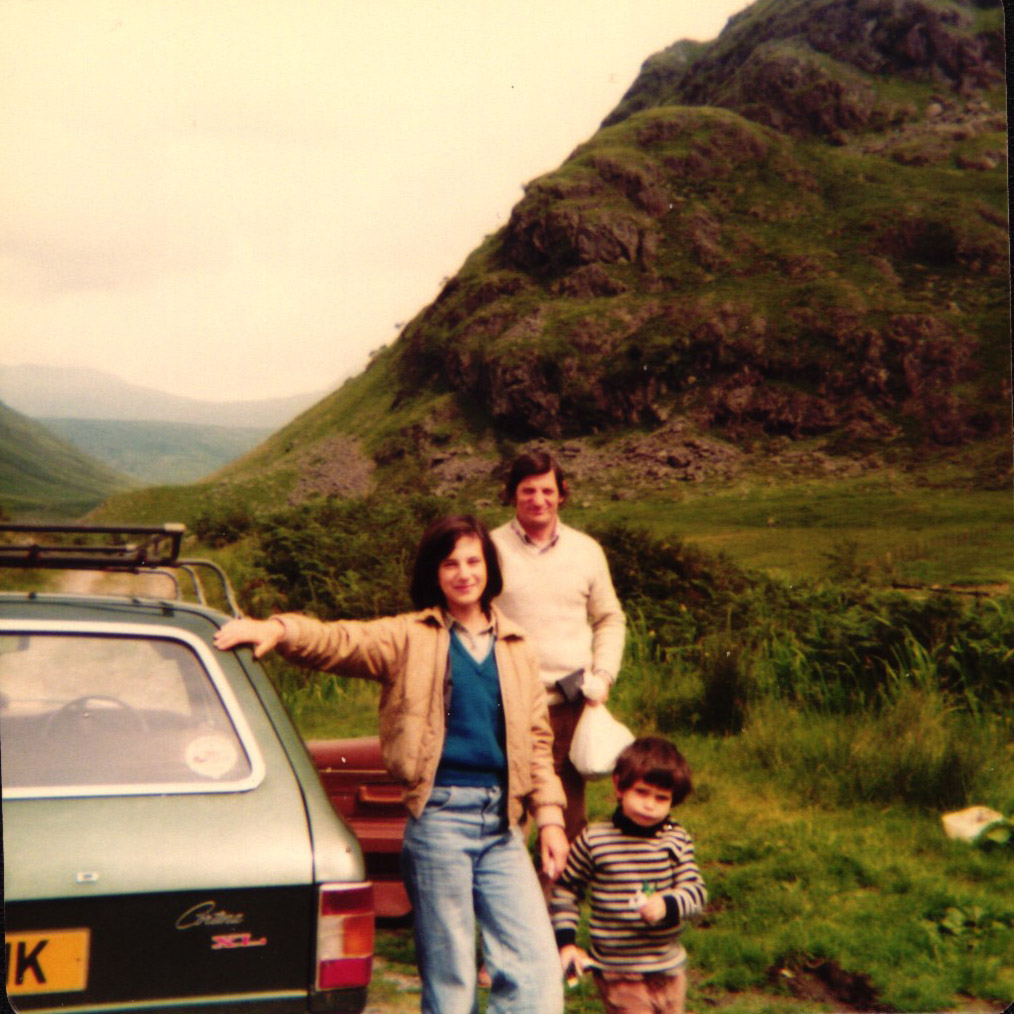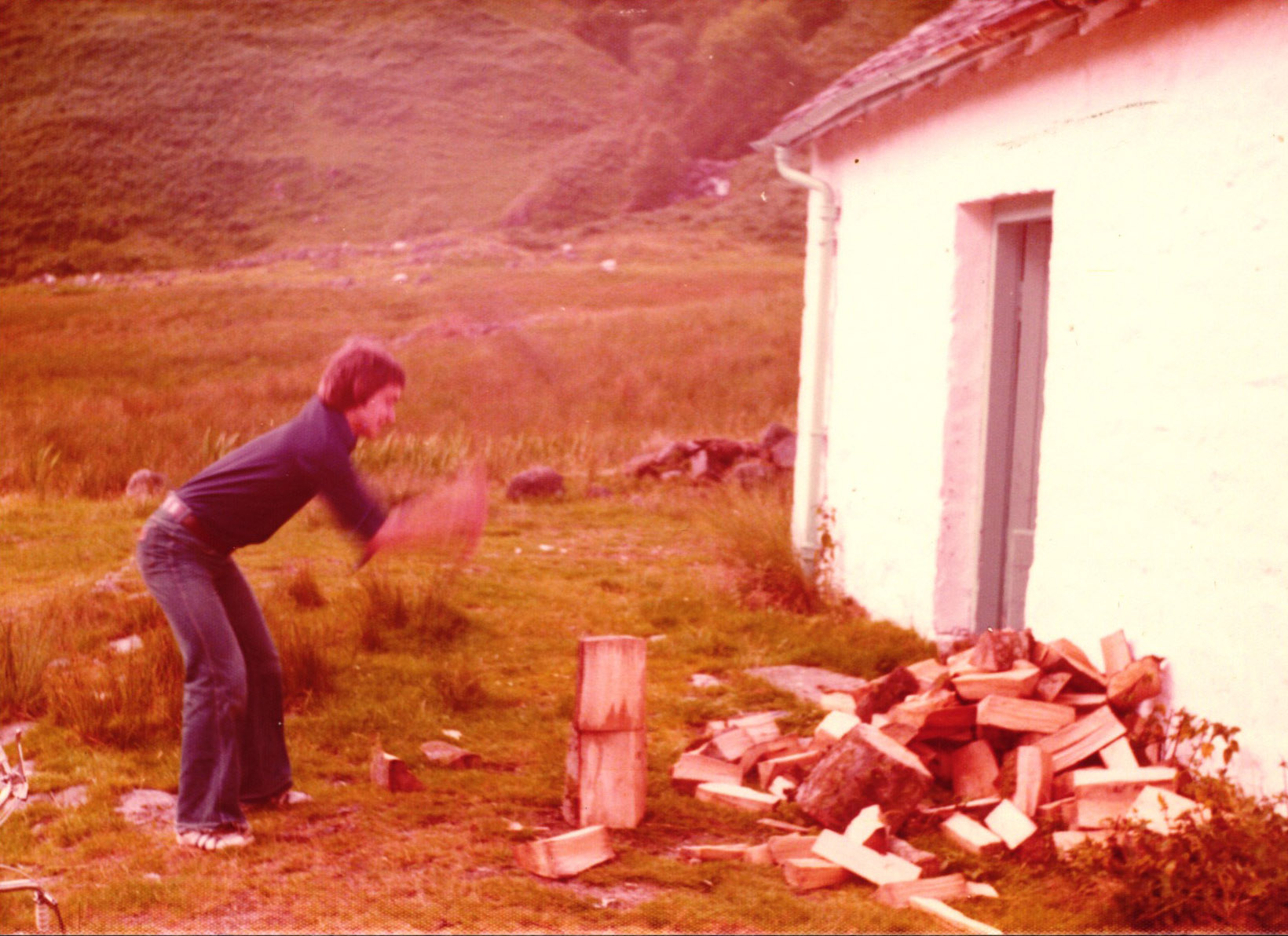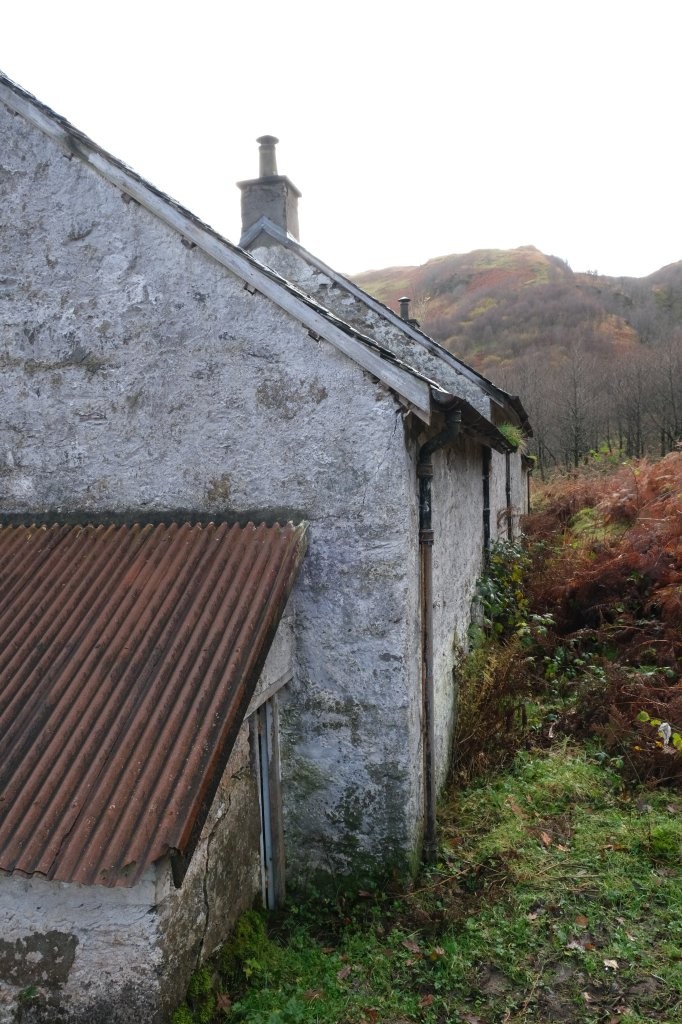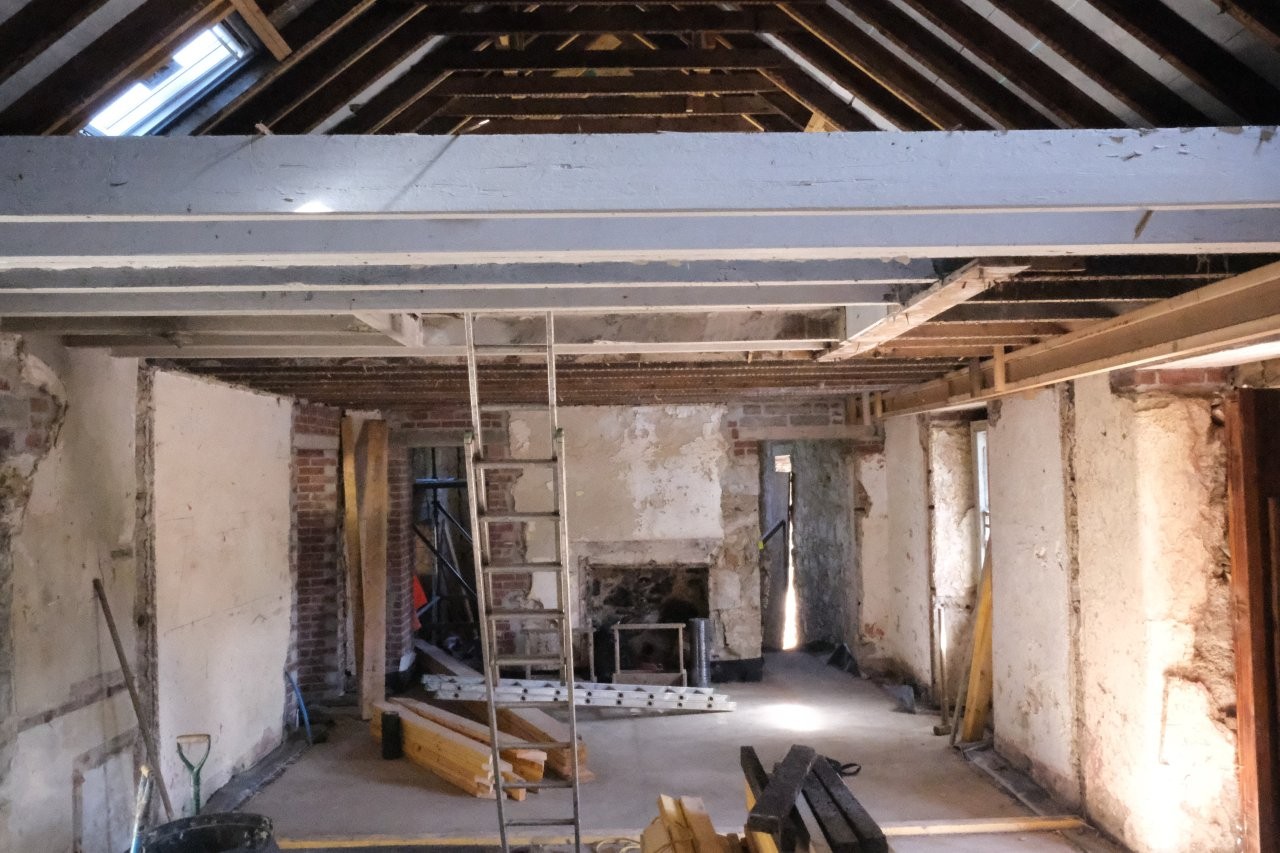Inverchorachan | 52 occupants (1841 - 1949)
i. General
Inverchorachan is located at the end of the road leading along the river Fyne and up towards the head of Glen Fyne. The house is unoccupied but is a very well preserved estate cottage of the mid 19th century. The central block, the main house, is of three bays and one-and-a-half storeys with loft rooms. There are single storied wings on either side. Overall, this is a very handsome building and an excellent example of its type, retaining as it does many early features and its character overall.
ii. Exterior
The principal entrance is central to the main elevation which is south facing and there are single windows on either side. Each of the single storied wings had had a single south facing entrance. The entrance in the eastern of the wings was subsequently formed up into a window. The whole has overhanging eaves and a slated roof. There are chimneys rising at the apex of the gables of the main house. There has been some relatively recent work, apparently to make the building wind and watertight - two velux windows, south facing, have been inserted in the main pitch of the roof. The chimneys themselves have also been repaired, whether rebuilt or not is unclear; they are plastered in cement. There are cast iron rainwater goods, gutters etc. complete throughout.
The structure is clearly rubble-built, much of it is now obscured by flush pointing or actual render in the case of the main cottage itself. The render itself clearly has some lime, but there seems to be some further cement work, although early. The whole has been limewashed over, which is now decaying. Evidently, the principal features are formed without dressed stone, although the entrance and window lintels are roughly squared off.
The window in the north side of the west wing appears possibly to be a secondary insertion, although relatively early if it is. The window of the east wing in the north side as seen externally, has clearly had secondary modification as there is cement work forming up the west jamb, apparently it had been widened to the west. The east jamb is formed up of rubble stone. A projecting footing course can be seen at points around the exterior.
The entrance on the south side of the western wing has a large, roughly formed lintel above. This contains a door which is of plank and batten construction, relatively recent and now damaged but with decorative ventilation slots, two of these above. It is possible that this had been a byre with a small hayloft above.
Below the former entrance on the south side of the east wing there are two steps leading up, large slabs of schist. The blocking within was formed up probably early - mid 20th century with cement block-work.
There is a very short cobbled path leading up to the stone steps of the principal entrance with a single step on the stone threshold. On either side of the path there are stone borders which appear to be early as well, for small garden beds. There are some flagstones at the surface, further to the west.
The rear part of the building is partly terraced into the hillside behind. On the rear elevation there is a central window in the main cottage and single small windows within each of the wings (as already noted). A rubble-built lean-to sits against the east gable of the east wing with crinkly tin roof, rubble-built walls and an entrance to the north and to the south. The entrances lead to small sheds subdivided internally by a wooden framed partition wall. The roof structure supported, on additional brickwork, is built off the wall heads, which suggests a secondary construction. There is preserved limewash on the gable wall of the east wing sealed within, limewash of a cream or creamy-pink colour. Areas of cobbled flooring are visible within the sheds.
iv. Interior
The western wing interior is under a simple, open A-frame roof with a single collar. In the western part there are four existing joists suggesting that it was partly ceilinged over. Limewash rises up to this level but apart from that there is no attempt to finish off the interior wall faces with further surfacing. The interior is used as a log store ? the floor to the north, a well preserved cobbled floor, large rough flags to the south. The bricks used are a mixture of 19th century types.
The principal entrance of the main building contains a twin leafed plank-and-batten doors which are further reinforced with cross bracing; these are unornamented. The door opens into a small entrance hall or vestibule, which leads into a symmetrically planned interior. The vestibule has entrances leading off to right and left to the principal ground floor rooms and opposite to a very steep straight flight of stairs to the upper floor. All openings are architraved with simply detailed surrounds with an inner quirked roll. Walls are plastered throughout. There are coat hook rails on either side of the stair entrance to the north.
The main eastern ground floor room has a large interior, simply appointed with plaster on to the walls all around. There are simple, unornamented skirtings, a plank-and-batten door with narrow bead at the joints with simple iron lock with brass handles. The fireplace in the east wall has what appears to be an original wooden fire surround. The interior has subsequently been in-filled to a smaller opening with brick and cement block-work. There is a wooden lined window to south, this sash and case, six over six, horizontally set panes; it has a Victorian gothic glazing bar profile, with brass finger lifts below. The lower ingo below is lined with matchboarding and there is a shelf within. An entrance at the south end of the east wall contains a simple plank-and-batten door leading to the interior of the east wing.
The east wing has an open space to the roof structure which is of simple A-frame construction. The walls bare rubble, whitewashed within, without internal features other than the former entrance in the south wall, subsequently formed into a window. This contains a six-over-six sash-and-case with Victorian glazing bar details. A wooden safe lintel is visible above. It is possible that this interior was not connected to the co



















































